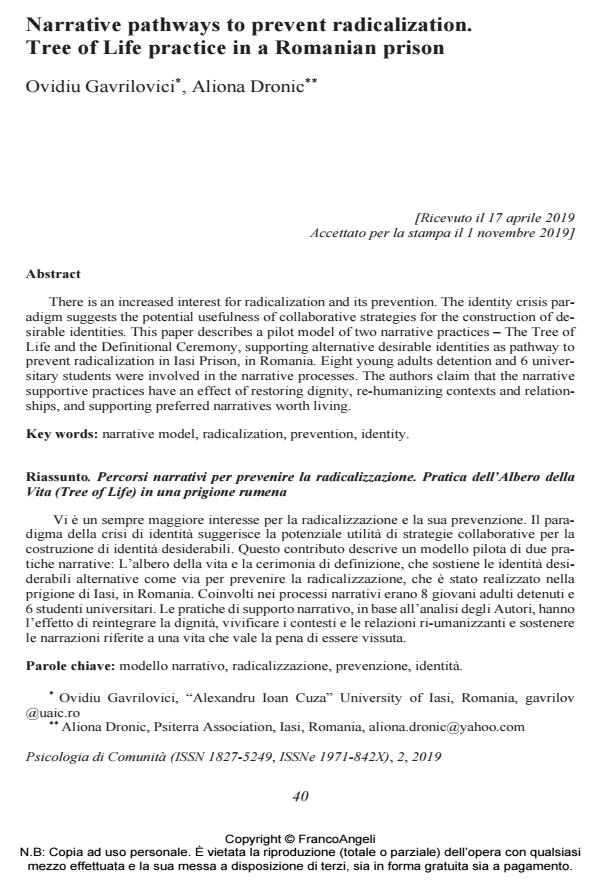Narrative pathways to prevent radicalization. Tree of Life practice in a Romanian prison
Journal title PSICOLOGIA DI COMUNITA’
Author/s Ovidiu Gavrilovici, Aliona Dronic
Publishing Year 2020 Issue 2019/2
Language English Pages 16 P. 40-55 File size 214 KB
DOI 10.3280/PSC2019-002004
DOI is like a bar code for intellectual property: to have more infomation
click here
Below, you can see the article first page
If you want to buy this article in PDF format, you can do it, following the instructions to buy download credits

FrancoAngeli is member of Publishers International Linking Association, Inc (PILA), a not-for-profit association which run the CrossRef service enabling links to and from online scholarly content.
There is an increased interest for radicalization and its prevention. The identity crisis para-digm suggests the potential usefulness of collaborative strategies for the construction of desir-able identities. This paper describes a pilot model of two narrative practices - The Tree of Life and the Definitional Ceremony, supporting alternative desirable identities as pathway to pre-vent radicalization in Iasi Prison, in Romania. Eight young adults detention and 6 universitary students were involved in the narrative processes. The authors claim that the narrative support-ive practices have an effect of restoring dignity, re-humanizing contexts and relationships, and supporting preferred narratives worth living.
Keywords: Narrative model, radicalization, prevention, identity.
- Preventing Violent Radicalisation in Europe Ovidiu Gavrilovici, Aliona Dronic, Laura Remaschi, pp.59 (ISBN:978-3-030-52047-2)
Ovidiu Gavrilovici, Aliona Dronic, Narrative pathways to prevent radicalization. Tree of Life practice in a Romanian prison in "PSICOLOGIA DI COMUNITA’" 2/2019, pp 40-55, DOI: 10.3280/PSC2019-002004